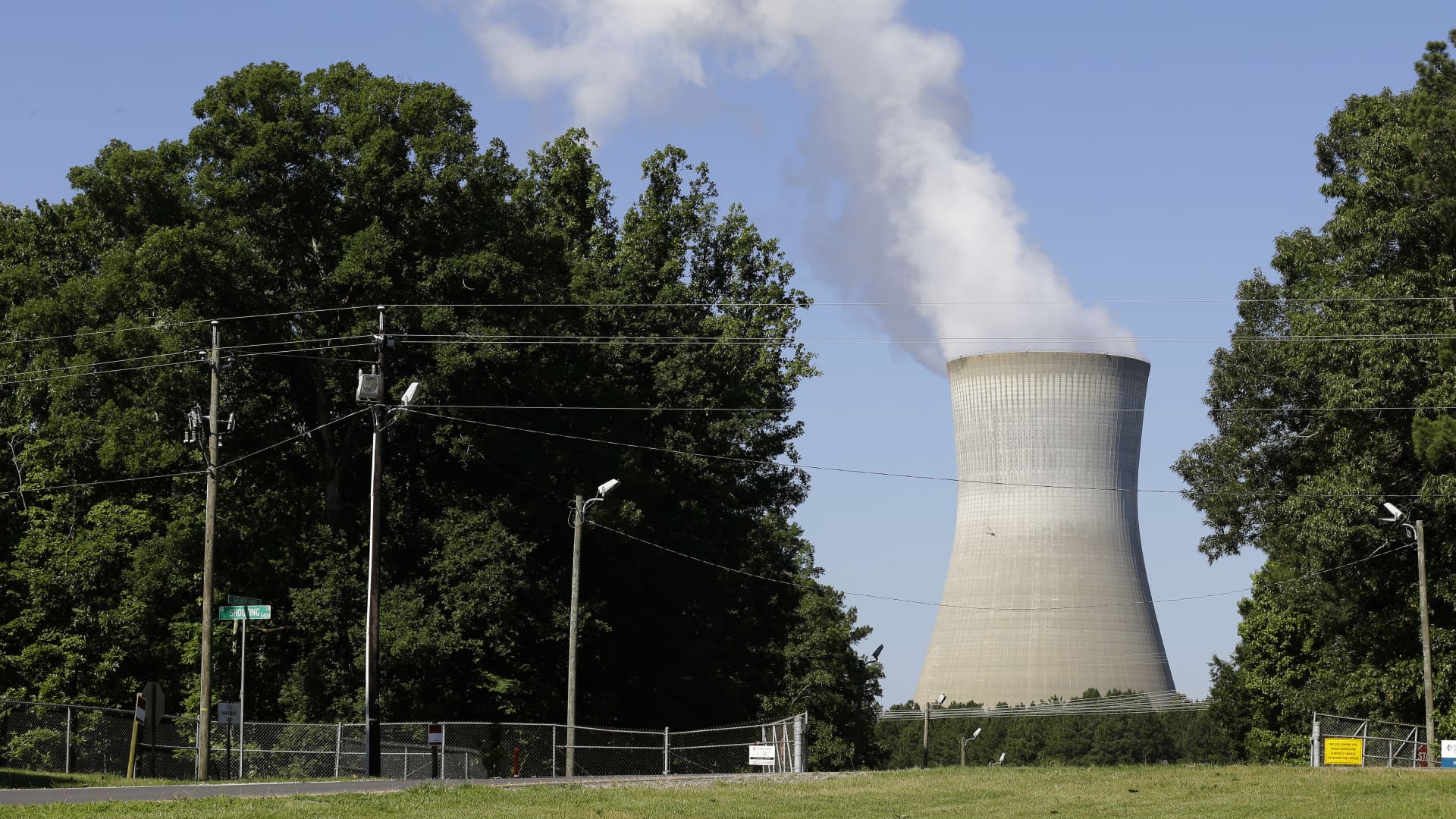The U.S. nuclear fleet is attracting growing attention as a power source for artificial intelligence and data centers, and Citigroup analysts say regulated utilities such as Duke Energy and Southern Company are the best way to play the trend. Data centers are expected to drive 31 gigawatts of incremental power demand through 2030, according to Citi. That will in turn drive efforts to increase utilization of the existing U.S. nuclear fleet of 95 nuclear reactors, which represents 102 gigawatts of reliable, carbon-free generation capacity, the analysts told clients in a Tuesday note. “We believe existing US nuclear fleet can increase generation due to higher baseload demand, policy, and power prices,” analysts led by Arkady Gevorkyan told clients. The Inflation Reduction Act provides a production tax credit, or PTC, of $15 per megawatt hour of electricity from generating nuclear facilities from 2024 through 2032. The tax credit effectively serves as a structural price floor that can provide revenue stability by preventing downside losses in a volatile market, according to Citi. Regulated utilities such as Duke Energy and Southern Company can pass this on to customers through a reduced bill or reinvest the cash flow from the tax credits on existing or future capital expenditures. The tax credit could lead to modest earnings growth that regulated utilities can use to improve their long-term financial outlook, according to Citi. “U.S. regulated utilities with nuclear assets are likely to receive PTC cash flow benefits that gradually ramp from 2024 through 2027 before reversing in 2032,” the analysts wrote. “This creates a cash flow uplift in the initial years which could help with financing.” Duke Energy is up 12% over the past three months, while Southern Company has gained 17%. Duke operates about 9 gigawatts of nuclear capacity, while Southern Company operates 5.4 gigawatts.
Nuclear energy back in favor with coming AI data center demand surge. Citi sees two stocks to play it










